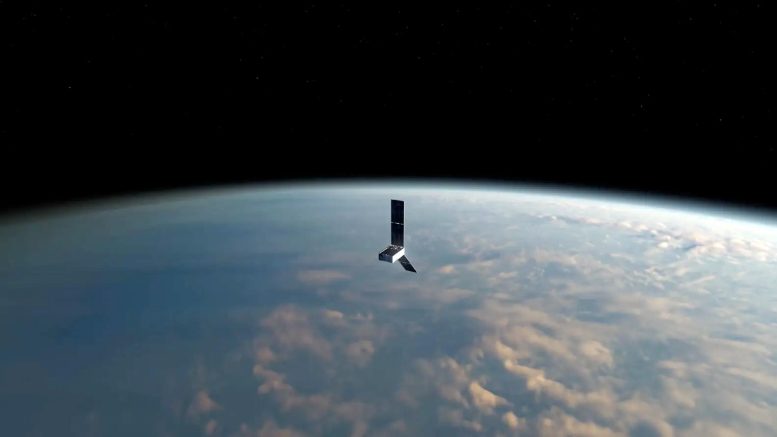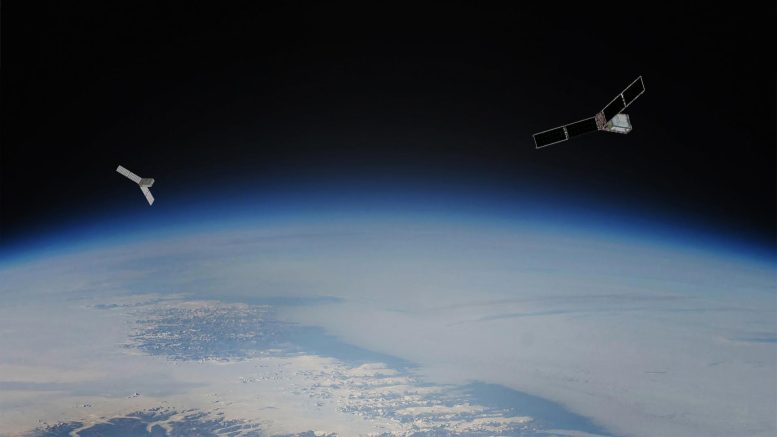
NASA’s PREFIRE mission, utilizing twin CubeSats, will measure the far-infrared energy emitted by Earth’s polar regions to boost our understanding of how much heat Earth’s polar regions radiate out to space and how that influences our climate.
NASA is preparing to deploy twin shoebox-sized climate satellites to study the Arctic and Antarctic, two of Earth’s most isolated regions. These satellites are part of a mission designed to measure the heat emitted into space from these polar areas. This crucial data will enhance our understanding of the energy balance between what enters and leaves Earth, significantly impacting our knowledge of climate dynamics.
The data collected by the Polar Radiant Energy in the Far-InfraRed Experiment (PREFIRE) mission will deepen our understanding of the greenhouse effect at the poles. It will focus particularly on how water vapor, clouds, and other atmospheric components trap heat, preventing it from escaping into space. Researchers will utilize this data to refine climate and ice models, improving predictions related to sea level, weather patterns, and changes in snow and ice coverage as the planet warms.
Each of PREFIRE’s cube satellites, or CubeSats, will use a thermal infrared spectrometer to measure the heat, in the form of far-infrared energy, radiated into space by Earth’s surface and atmosphere.

Here are five things to know about this small but mighty mission:
1. The PREFIRE CubeSats will provide new information on how Earth’s atmosphere and ice influence the amount of heat being radiated out to space from the Arctic and Antarctic.
The CubeSats will gather data over the poles using sensors that are sensitive to 10 times more infrared wavelengths than any similar instrument. Information gathered by the mission will advance our understanding of when and where the poles shed heat into space, as well as why the Arctic has warmed more than 2½ times faster than the rest of the planet since the 1970s.
2. This mission will focus on the far-infrared portion of the heat Earth emits into space.
Just beyond the visible part of the electromagnetic spectrum sits the infrared, a spectrum of longer-wavelength light that can be sensed as heat. Essentially all of Earth’s heat emissions happen at infrared wavelengths between 4 and 100 micrometers. At the planet’s cold polar regions, 60% of the heat emissions occur at far-infrared wavelengths (longer than 15 micrometers). Researchers have relatively little data on which parts of the Arctic and Antarctic are shedding this heat. PREFIRE will help address this lack of knowledge, giving scientists a better idea of how efficiently far-infrared heat is emitted by things like snow and sea ice, and how clouds influence the amount of far-infrared radiation that escapes to space.
3. Data from PREFIRE will help improve polar and global climate models.
By filling in gaps in our knowledge of Earth’s energy budget, PREFIRE will sharpen our understanding of what drives the loss of polar ice on land and sea, and related questions of sea level rise. This will help researchers better predict how the heat exchange between Earth and space will change in the future, and how those changes will affect things like ice sheet melting, atmospheric temperatures, and global weather. PREFIRE data will be available to the public through NASA’s Atmospheric Science Data Center.
4. The PREFIRE CubeSats are designed to answer critical questions using a platform that’s lower-cost than a full-size satellite.
The PREFIRE CubeSats use advances in spectrometry to measure processes associated with ice melt and formation, snow melt and accumulation, and changes in cloud cover. A single satellite that revisits the same region of Earth every several days can monitor seasonal changes that researchers can use to improve climate models. But following the interactions between Earth’s surface and atmosphere, such as the amount of cloud cover temporarily effecting the temperature of the area beneath it, requires more frequent measurements. Two satellites in asynchronous near-polar orbits — passing over a given spot on Earth at different times, looking at the same area within hours of each other — could catch some of these shorter-time-scale phenomena.
5. The PREFIRE mission is helping to train the next generation of satellite climate scientists.
NASA developed PREFIRE with the University of Wisconsin-Madison, including team members from the universities of Michigan and Colorado. The mission engages a diverse group of undergraduate and graduate students, who make up a significant portion of the science team.
NASA’s PREFIRE Mission
The PREFIRE (Polar Radiant Energy in the Far Infrared Experiment) mission is a NASA-funded project aimed at measuring the far-infrared radiation emitted from the Earth in the polar regions. This part of the electromagnetic spectrum is crucial for understanding Earth’s climate, especially for its role in regulating the planet’s energy balance. Despite its importance, far-infrared radiation is one of the least measured aspects of the Earth’s energy budget.